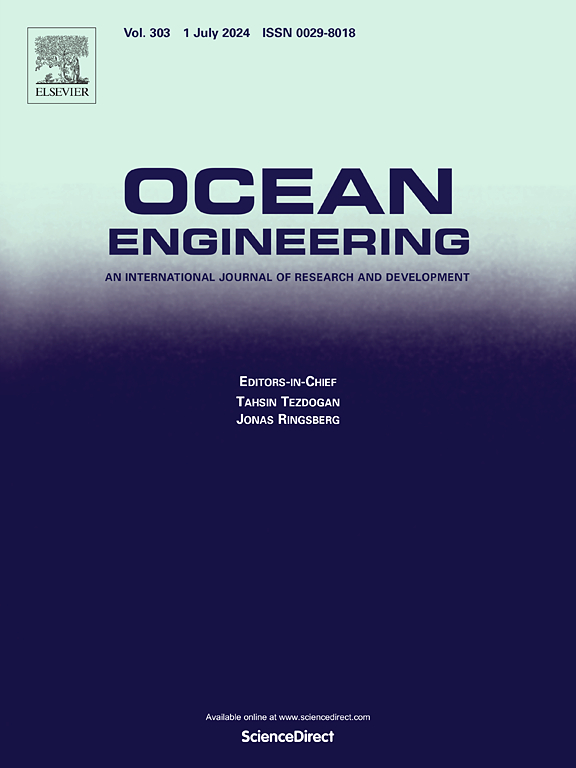基于输入状态安全归零高阶控制障碍函数的海上自主水面舰艇自动靠泊约束轨迹规划
IF 5.5
2区 工程技术
Q1 ENGINEERING, CIVIL
引用次数: 0
摘要
研究了受多港口岸线约束的受限港口中自动靠泊的海上自主水面舰艇(mass)的轨迹规划问题。提出了一种具有无碰撞特性的质量体自动靠泊的轨迹规划方法。首先,利用视距制导方法获得一系列浪涌速度、摇摆速度和偏航率信号,从而生成标称轨迹,使MASS以期望的航向角到达最终靠泊位置。然后,利用扩展状态观测器估计的扰动信息,产生一系列的激波力和摆振力信号。然后,引入输入到状态安全归零高阶控制屏障函数(issf - chocbfs),将港口岸线编码为多个安全约束。最后,进一步利用编码后的安全约束,制定二次规划问题,获得最优的横摆角速度、浪涌力和摆荡力信号,从而得到自动靠泊的安全轨迹。仿真结果验证了所提出的基于issf - zhcbf的无碰撞自动靠泊轨迹规划方法的有效性。本文章由计算机程序翻译,如有差异,请以英文原文为准。
Constrained trajectory planning for automatic berthing of maritime autonomous surface ships based on input-to-state safe zeroing high order control barrier functions
This paper addresses the trajectory planning of maritime autonomous surface ships (MASSs) for automatic berthing moving in a restrictive harbor subject to multiple port shorelines. A trajectory planning method is proposed for the automatic berthing of an MASS with collision-free behavior. First, a line-of-sight guidance method is utilized to obtain a sequence of surge velocity, sway velocity, and yaw rate signals such that a nominal trajectory is generated for the MASS to reach the final berthing position with a desired heading angle. Next, a sequence of surge force and sway force signals are generated by using the estimated disturbance information obtained from extend state observer. Then, input-to-state safe zeroing high order control barrier functions (ISSf-ZHOCBFs) are introduced to encode the port shorelines as multiple safety constraints. Finally, the encoded safety constraints are further resorted to formulate a quadratic program problem for obtaining optimized yaw rate, surge force, and sway force signals such that a safety trajectory for automatic berthing is obtained. Simulation results verify that the effectiveness of the proposed ISSf-ZHOCBF-based trajectory planning method for collision-free automatic berthing.
求助全文
通过发布文献求助,成功后即可免费获取论文全文。
去求助
来源期刊

Ocean Engineering
工程技术-工程:大洋
CiteScore
7.30
自引率
34.00%
发文量
2379
审稿时长
8.1 months
期刊介绍:
Ocean Engineering provides a medium for the publication of original research and development work in the field of ocean engineering. Ocean Engineering seeks papers in the following topics.
 求助内容:
求助内容: 应助结果提醒方式:
应助结果提醒方式:


